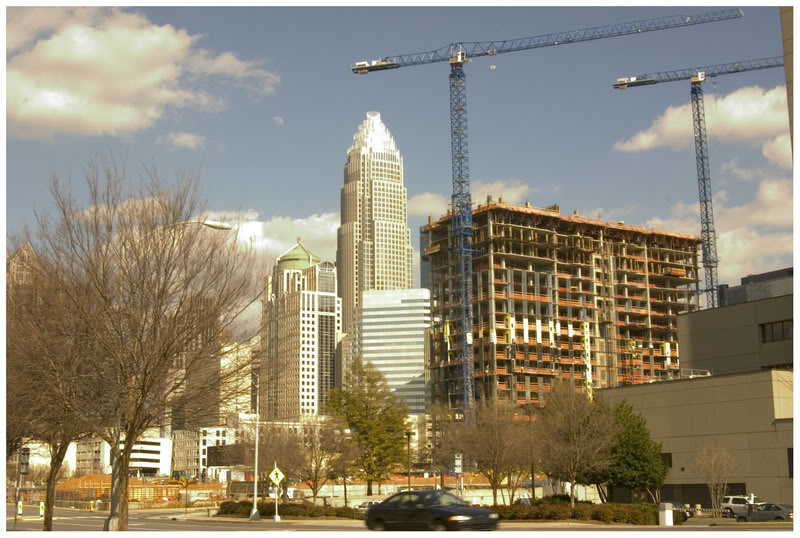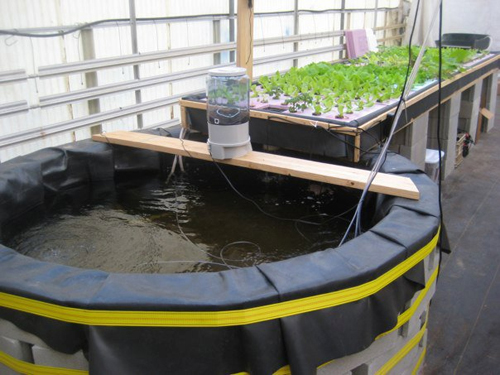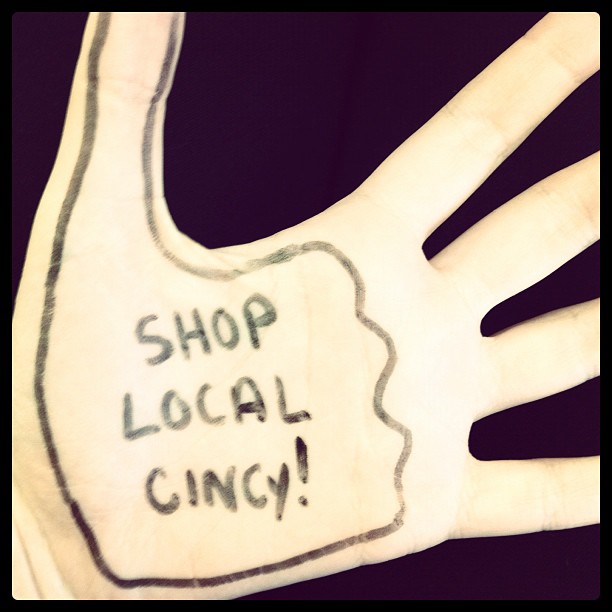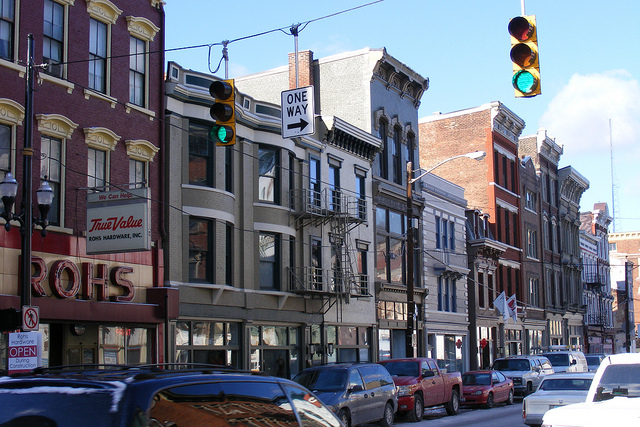In 2008 Micah Paldino started a public relations and branding firm out of a coffee shop. Since that time he has grown his workforce, client base and office space in downtown Cincinnati, and has merged with another small startup company. Now as Peanut Butter Jelly Co. (PB&J) settles in to their new 2,700-square foot creative space on 7th Street they hope to continue that growth.
PB&J just completed the relocation of their firm from a 300-square-foot office space on the ground floor of the Ft. Washington Hotel on Main Street. Paldino first moved into that space on his own and eventually added more employees as the company’s client base quadrupled. The new 7th Street space (map), in the former Provident Camera building, gives PB&J’s five employees room to be creative and room to grow.
The focus of the two companies that have merged now includes design, installation, public relations, social media, marketing and advertising – an effort Micah says forms a truly multi-disciplinary design firm.
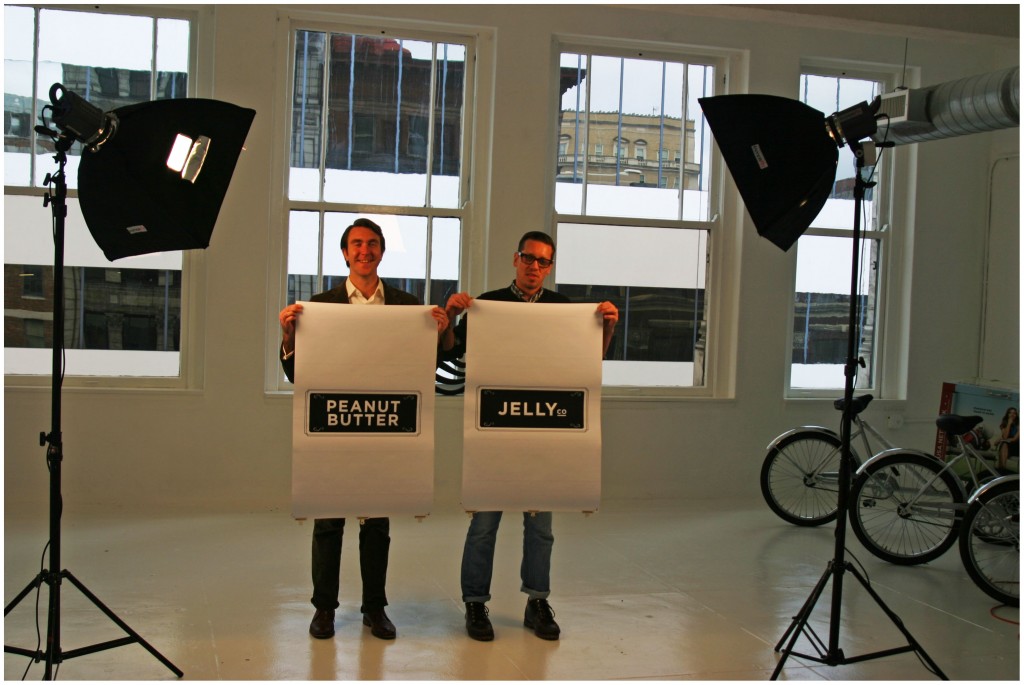
PB&J partners, Micah Paldino [LEFT] and Emmit Jones [RIGHT], have begun settling into their new creative headquarters space on 7th Street.
“I had always yearned for a business partner but could never see how it fit in my business or who it could be,” explained Paldino. “When I met Emmit Jones in November of 2010, through an employee who had interned for his company Syn/Tax Ltd., we immediately hit it off.”
What is more unique about PB&J than its name is perhaps the company’s focus on Cincinnati’s urban core. They represent companies like Yagoot, Landor, Adam Miller Homes, Sloane Boutique, and Such & Such, and encouraged Cincinnati-based Busken Bakery to dive into the MidPoint Music Festival with a new targeted marketing campaign.
“You just can’t match the energy of downtown,” Paldino exclaimed. “I love more than anything walking to get my 4th coffee at Coffee Emporium or Tazza Mia and seeing someone I know, and starting up a conversation. I love the interaction.”
As the company attempts to grow the burgeoning “lifestyle” market focus, they also take to the city streets. A tangible example is found near the intersection of 7th Street and Race Street downtown where PB&J has coordinated PR efforts for Landor as the company fills their street-level windows with active and engaging displays.
“Personally, I enjoy walking downtown and seeing more and more street-level businesses using their windows to appeal to consumers. I’ve seen Saks Fifth Avenue, Losantiville and Atomic Number 10 really take pride in presenting themselves in their street level bill boarding. This type of appeal is more than marketing; it is a gift to street culture, arts and our community.”
Over the next two years Paldino and Jones hope to grow PB&J’s staff by approximately 40 percent, further establish their presence in new regional markets such as Chicago and New York, and ideally open an office on the West Coast in addition to their Cincinnati headquarters.
“Our desire is to keep the boutique feel of our agency while continuing to work on large-scale campaigns, and of course, maintain good quality customer service to our clients,” Paldino detailed. “Good, thoughtful and inspired design shouldn’t be reserved just for the Fortune 500 companies with grand budgets. Every element, every product, every experience in your daily life should be carefully considered, inspired and have a good designer at the helm.”

